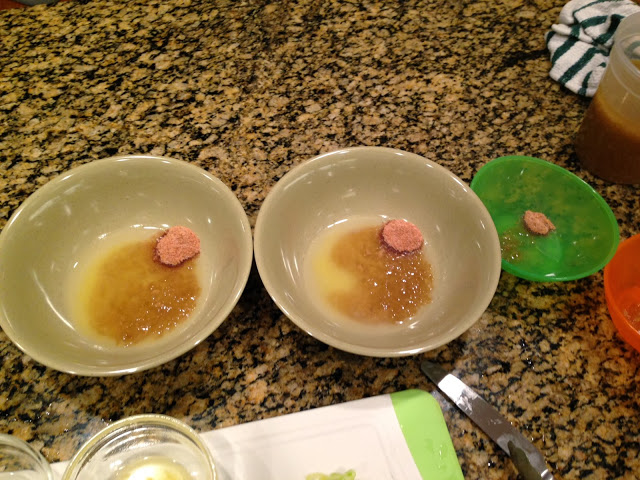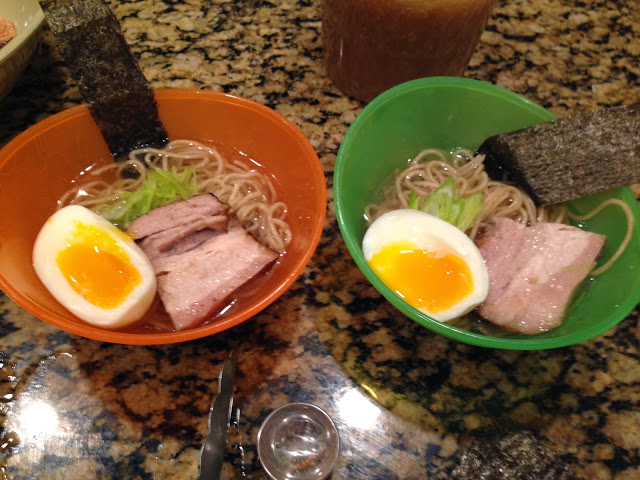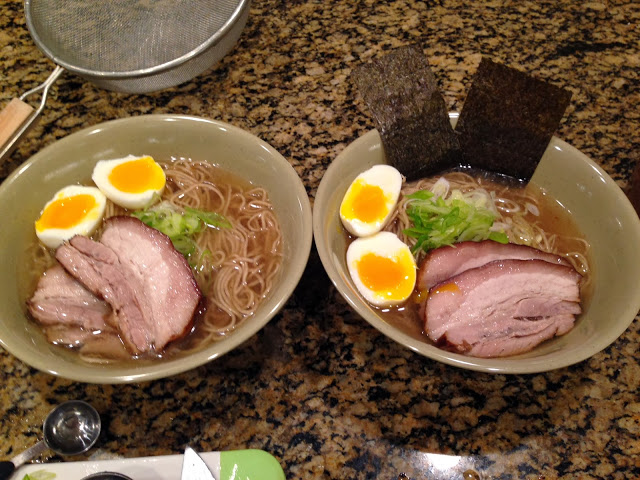
jmolinari
-
Posts
1,415 -
Joined
-
Last visited
Content Type
Profiles
Forums
Store
Help Articles
Posts posted by jmolinari
-
-
got my ship notice 5 minutes ago!
-
just called amazon...the nice lady tried, but after passing me around to 3 or 4 different people wasn't able to get anywhere. They said to contact the creator.
guess we keep waiting.
-
Still no email from amazon...this suuuuuuuuucks
-
me either...previous email from booker and dax didn't get filtered so i should see it
i wait...i wait..
-
i can't believe people have theirs already. I haven't even gotten an email from amazon notifying me of shipping or anything.
-
pork bungs are used for some of the more presigious salami in italy. They have a tremendous amount of fat allowing for much longer drying times without overdrying the meat.
I've used them in my home productions. They smell like ass

Also i've eaten them fried at a vietnamese restaurant. It's the only food i can ever remember "uneating". I have no issue with it, the taste just wasn't for me.
-
It sounded too good to be true, until they specified that you still need to cook in small batches, which makes sense...so i'm not sure i 100% see the point.
-
Did you look up any tables to calculate how long it would take for the center of the meat to reach 130F?
If it's longer than 4 hours that's a problem.
How that relates to outer surface grossness, i'm not sure, but it sounds like a key step in safety for sous vide was missed.
-
 1
1
-
-
I had once found a study on trichinella destruction, and i remember it listed 138 deg F for like 15 minutes..but i can't find the source now...searching.
Foudn it:
-
 1
1
-
-
I just pop them our with the tip of a paring knife.
Easy-peasy.
Lemon squeezy?
-
 2
2
-
-
Ivan in his book saids to keep the temperature at 176F for the first hour, and then he raises the heat to a slow boil for skimming.
Then he said lower the heat to a medium simmer. What is a medium simmer? Is it back to 176F for 5 hours?
He even saids in his book that temperature is very important and that people have different takes on simmering, barely simmering and boiling, so its best to use his exact temperature. So why didn't he give an exact temperature and just say medium simmer for 5 hours?
Molinari, if he did want 176F for the final 5 hours, then pressure cooking would ruin the first hour of 176F you did.
This is why I'm thinking simply sous vide the broth at 176F is the way to go. I'm thinking sous vide the sofrito is also the easiest and best way to go as well.
Any thoughts on what temp the final 5 hours are and sous vide broth?
I'm sure the sous vide chicken broth would work, but you're not going to get the temperature high enough for the sofritto.
-
The ramen sofritto says it's supposed to make 2.5 cups, but there is a quart of oil alone...so i'm thinking there are some print/recipe errors.
I say try it both ways...with and without the oil and see which you prefer.
-
Torolover, i pressure cooked the chicken because i didn't feel like watching it for 5 hours. i did the 1 hour at 176 as he described, then pressure cooked it.
I own what research suggested would be the best pressure cooker, and I only use it for beets. Even for beets, it's a compromise, but there's a Moroccan beet salad I can have far more often this way.
I tried pressure cooking chicken, and it tasted institutional, ghastly. Life is too short, I threw it out.
I've made various components from Ivan's book, and improvised noodle dishes from what I'd completed. Not ready yet to give the full shebang a fair test.
Fair enough. Personally, i think PC stock is as good as normally simmered stock. I've never done a side by side, but i have no issues with it.
-
Torolover, i pressure cooked the chicken because i didn't feel like watching it for 5 hours. i did the 1 hour at 176 as he described, then pressure cooked it.
Robert, i specifically asked Ivan on twittet about the oil and he said the oil is part of the soffritto...so it sounds like it's either or....i will agree that leaving the oil there makes the ramen rather oily...tasty, but oily.
-
"" whole reason for creating it. ""
agree. now if they meat their goals ...

I have no concern that it'll get delivered, EVENTUALLY.
June 2014? We'll see. I'm mentally prepared for delays already. Every kickstarter project i've followed out of interest has been delayed months and months
-
and ... will it really be hot enough to brown quickly and not cook the meat to cancel out the SV benefits esp. for 'rare' ?
i would say def. yes as that's the whole reason for creating it.
-
I am not sure why, when it comes to roasting chicken, the definition of "crispy" gets very elastic. You see famous chefs, blogs, America's Test Kitchen, etc. can't seem to tell the difference between nicely browned and crispy skin.
So many "The best", "Perfect" ways to make crispy chicken. High heat, low heat, dry brine, wet brine, salt, marinate, herb under the skin, spatchcock, plaster with butter, inject with secrete flavoring --------.
I decided to roast one without add anything, just chicken, not even pepper, with not even a grain of salt. Just a pure experiment in cooking thermal dynamics.
The chicken was not store pre-soaked. The only thing I did to it was to remove the bag of giblets and some extra fat. I never truss a chicken or turkey. Trussing produces soggy anemic skin and uncooked meat.
The chicken went into the sous vide cooker at 155 F for 5 hours, then into the dehydrator set at 150 F for 5 hours. While I was pre-heating the oven, the chicken was put into the freezer for about 20 minutes.
Once the oven got to be 550 F, I removed the kitchen's smoke alarm, turned on the exhaust fan, and put the chicken into the oven to roast.
Turning the bird a couple of times, it took about 5, 10? minutes and the experiment was finished.
There was no need to rest the chicken with sous vide cooking. Uniformly juicy and tender meat is a given with sous vide cooking.
Like the golden fragile layer on a perfect creme brulee, the skin turned out to be so shatteringly crispy, even handling the chicken gently cracked the skin in a few places.
A simple quick dipping sauce was all needed to enjoy this perfectly pure poultry pleasure.
dcarch
Looks awesome.
how do you sous vide a whole chicken? Do you fill a big zip bag with stock and put the chicken in and put the bag into the circ?
-
that's an accurate description of my first and only experience. It was horrible.
-
not to mention that heating up a salamander broiler heats up the kitchen, and isn't as intense as direct heat from a torch with the searzall, so it's quite different.
Using a pan is ok, but it makes a pretty big mess of my stovetop with splattered stuff...i imagine this will reduce the mess considerably, and also overcome my anemic stove burners.
-
Me too. I've used a torch a couple times and every time my wife and I tasted somethign weird and unpleasant. I figured i was doing it wrong because i kept seeing people doing it and instructing to do it, including in Modernist cuisine...turns out I was right, AH HAH!
-
 1
1
-
-
flavor will be affected greatly by pink salt. It's not necessarily only for safety.
-
Looks like we're getting delayed for a retooling. Hope the 60 day push is all that's needed to get these out to us.
sounds like every other kickstarter project, ever.
I would be surprised if anyone is surprised by this.
-
Finishing up the ramen story....
Yesterday i cooked the pork belly, the eggs, the chicken stock, the dashi and the katsuobushi salt.
Bowl with lard, chicken fat, soffritto and katsuobushi salt before double broth:

Kids mini portions:

Adult portions:

Overall very pleased. It's incredibly good broth. Very rich and intense. There is a fair bit of fat in there from the lard, the chicken fat and the oil in the soffritto. The noodles are good, but i don't know that they can ever be as good as professionally made ones, but i'll keep trying.
For the chicken broth, i brought the chicken and 5 quarts of water to 178 deg. Kept it ther for 1 hour, then pressure cooked at high pressure for 1 hour. It was a good nice chicken broth. Next time i would reduce the water to 4 quarts or so for more intensity.
I would say this is definitely worth the effort. A lot of this (in fact all of it) is easily made or frozen except the dashi, which if made using teabags takes 10 minutes.
Now to make the tsukemen!
The dashi i used a konbu/katsuo teabag and an iriko teabag. It was good.
-
 1
1
-
-
I got my discount code 1 minutes after scanning the QR code and logging in, and my safari browser giving me an error...
if you've registered and not gotten your code, i would email or contact someone

The Searzall by Dave Arnold
in Kitchen Consumer
Posted · Edited by jmolinari (log)
I got mine on saturday and have been playing with it.
There is a learning curve to know how close you can and should be to the object you're torching. I did a steak last night after SV and it took about 5.5 minutes, but looking at the demo video of Booker and Dax searing steak it looks like i was keeping it too far. Theirs took about 2.5 minutes, and it looked like they had the searzall as close as the guard on the front will allow it to be to the steak.
What have you guys seared? I tried to toast bread, and got more of a speckled burnt than a real toasting...maybe i had it too close?
Also, have you found that when holding the searzall so it's facing down the torch sputters every so often?